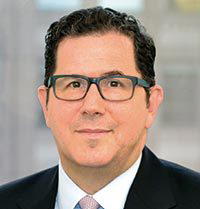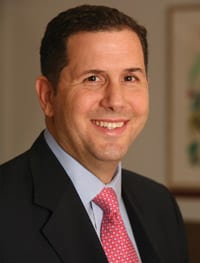

- Jim Fuell
- Head of Global Liquidity Sales, International, J.P. Morgan Asset Management
by Jim Fuell, Managing Director, Head of International Global Liquidity Sales, J.P. Morgan Asset Management
The Security and Exchange Commission’s (SEC’s) long-awaited US money market fund (MMF) reforms have finally made their way through the pipeline and into practice. They’re the latest in a long line of regulatory changes, and they won’t be the last, says Jim Fuell, Managing Director, Head of International Global Liquidity Sales, J.P. Morgan Asset Management. Now is the time for short-term fixed income investors in Europe to start thinking about the impact that similar reforms could have on their own portfolios.
The SEC’s MMF reforms came into effect in the US on 14 October. What do the changes really mean for investors in the US and beyond?
 Simply put, they mean that institutional prime MMFs must shift from a stable net asset value (NAV) to a floating NAV, as well as setting liquidity fees and redemption gates.
Simply put, they mean that institutional prime MMFs must shift from a stable net asset value (NAV) to a floating NAV, as well as setting liquidity fees and redemption gates.
For our clients, it’s not the rules of how they invest that are changing, but the landscape around them. But when it comes to the impact by region, there’s a real market dislocation among investors. In the US, billions of dollars have moved out of prime or credit-style MMFs into government-style funds, with direct consequences for LIBOR, spreads and short-term bank issuance.
In Europe, our investors may not be directly affected by events in the US, but they are affected by short-term changes in the investment market, and they need us to help them understand that. That’s where we come in.
So how do investors get to grips with the impact on their investments?
We work hard to engage with our clients on these issues and actively share our insights with them. We recently published a white paper on LIBOR, in which we dissected main causes for the recent dramatic rise in US LIBOR—and the implications for short-term fixed income investors. We also publish an annual Global Liquidity PeerView survey, which brings together the responses of more than 400 senior decision-makers in a barometer of sentiment in the MMF industry, giving participants a unique perspective on their cash investment decisions vs those of their peers. And earlier this year, our Investment Forum brought together 130 clients with our specialists from areas of our business like portfolio management, government relations and product development to talk through the issues that are currently shaping the industry.
How have you reflected the changing market landscape in your product range?
With our long-standing track record at the forefront of the money market space, we have the breadth of experience and resource to deliver products right across the MMF spectrum. What’s more, the global nature of our business means we’re well placed to work with our clients in the US, Europe, Asia and Latin America, running money fund products across multiple jurisdictions. It also puts us in the perfect position to develop new, innovative solutions for our clients as the dynamics of the short-term markets change.
With the advent of negative yields in Europe—and the potential for negative yields in the sterling space too— many investors are striving to generate additional returns by investing cash balances with a longer investment horizon and a higher tolerance for volatility. In response to this demand, we recently added a new fund to our Managed Reserves strategy which invests primarily in sterling-denominated short-term debt securities, targeting a return in excess of sterling money markets.
How are you preparing for upcoming changes in the Europe MMFs space?
We don’t yet know the final form or timing of European regulation. What we do know is that it will happen—and sooner rather than later. The bodies that are responsible for writing regulation in Europe—the European Commission, the European Parliament, the Council of the European Union— are now in the process of amalgamating their individual positions, moving us well into the final drafting phase.
One lesson we’ve learned is that despite a two-year implementation period in the US, investor money didn’t start moving until the final two months. While we know the wheels of reform tend to turn slowly, there’s no excuse for sticking our heads in the sand when it comes to regulation—and that goes for the industry and for investors.
Until we have more clarity on the final picture, we’re staying focused on what matters most: keeping our clients up to speed with reform, engaging in the dialogue around reform and working with policy makers to help shape discussion as it evolves.









